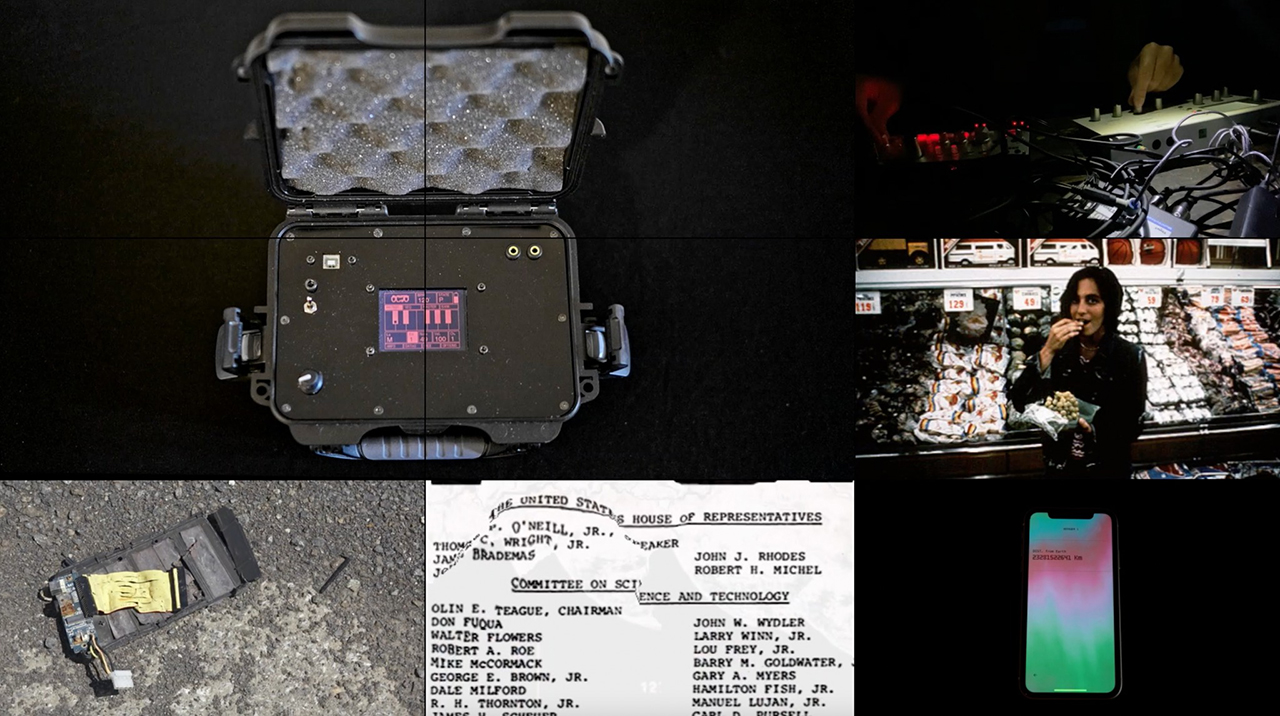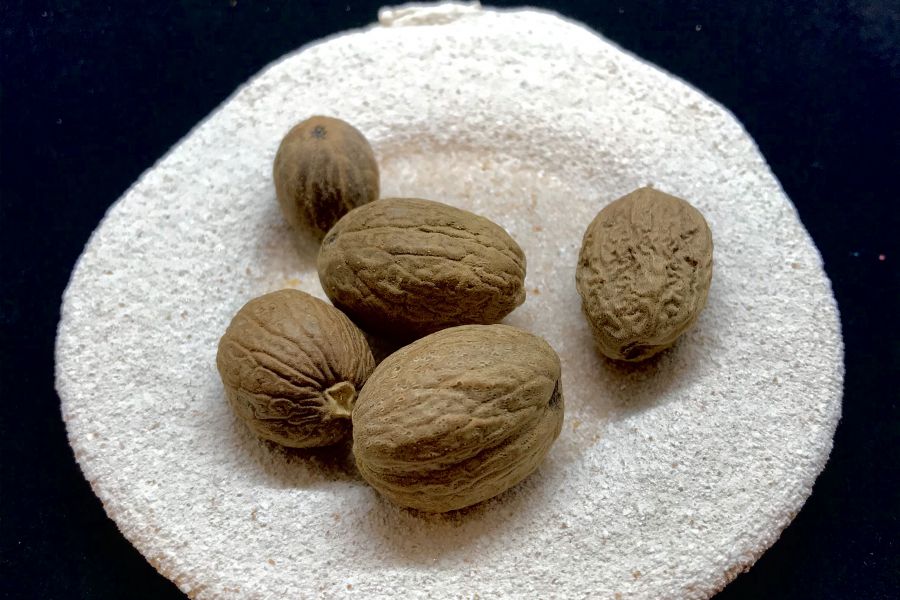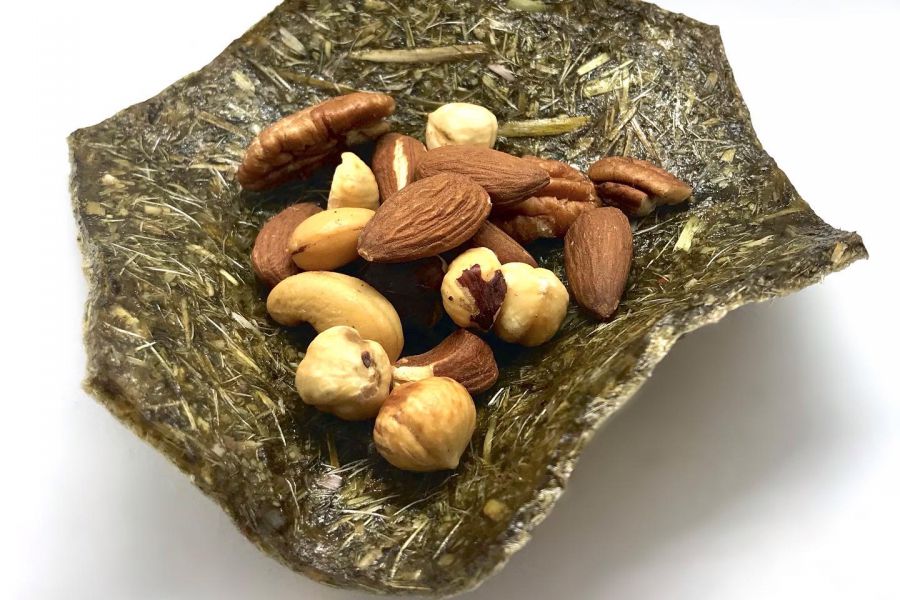22.04.2022
1:00 p.m. - 4:00 p.m. @ Planétarium Rio Tinto Alcan de Montréal (4801 Pierre-De Coubertin Avenue)
The event is free and will be hosted in both French and English. / Cet événement est gratuit et sera animé en français et en anglais.
Debris, space and meaning around the exhibition ‘Inertia’: The waste cycle of planetary vision infrastructures: Demos and round table
The built environment supports human activity. Infrastructures and cities have long been designed, territorialized and experienced on a horizontal plane parallel to the earth's crust. However, the 92.8 billion tons (Gt) of material goods produced each year on a planetary scale can also be considered according to a dynamic of vertical circulation which connects - from the extraction of natural resources to the end of useful life of these goods - submarine cables, undergrounds, cities, skies, Earth's orbit and even interstellar space. Presented from April 22 to June 13, 2022 at the Rio Tinto Alcan Planetarium in Montreal, the exhibition Intertia intersects the disappearance of the Earth in the eye of the Voyager probes with the environmental situation in the neighbourhood of Montréal-Est. As Voyager's scientific instruments are gradually being shut down due to a lack of available electrical energy, this public activity organized within the context of Earth Day 2022 proposes, from a vertical perspective, to compare the issues related to space debris with those generated by our ways of life on Earth. Drawing on engagement in their practice with residual, geo-inspired, reactive, intelligent or sustainable materials, the invited artists, designers, media theorists and scientists will take an interdisciplinary look at how these artifacts allow us to envision new scenarios and relationships for the waste – material and technological – produced on Earth, but also left adrift in space.
Demos 1:00 p.m. - 2:30 p.m.
Biointerface Lab (McGill University, with Marta Cerruti, Gabriele Capilli, Yiwen Chen and Nima Zakeri);Suzanne Landry (Arts visuels et médiatiques, UQAM);
Juliette Lusven (Études et pratiques des arts, UQAM);
Milieux Speculative Life Biolab (Concordia University, with Alice Jarry, Brice Ammar-Khodja, Jacqui Beaumont and Philippe Vandal);
Guillaume Pascale (Études et pratiques des arts, UQAM);
Smart Materials and Adaptive Structures Lab (Concordia University, with Alireza Moezi and Hossein Vatandoost);
Space Media Working Group (University of Toronto, with Marie-Pier Boucher, Réka Patrícia Gál and Yuxing Zhang (Yolanda));
Topological Media Lab (Concordia University, with Navid Navab)
Round Table 2:30 p.m. - 4:00 p.m.
Marta Cerruti (McGill University)Yuxing Zhang (Yolanda) (University of Toronto)
Brice Ammar-Khodja, Alireza Moezi, Navid Navab and Hossein Vatandoost (Concordia University)
Réka Patrícia Gál (University of Toronto)
Olivier Hernandez (dir. Planétarium Rio Tinto Alcan de Montréal)
Moderation: Alice Jarry, Marie-Pier Boucher and Guillaume Pascale
Débris, espace et sens autour de l’exposition Inertia:le cycle des déchets des infrastructures de vision planétaire : Démos et table-ronde
L’environnement bâti soutient l’activité humaine. Les infrastructures et les villes ont longtemps été conçues, territorialisées et expérimentées selon un plan horizontal parallèle à la croûte terrestre. Toutefois, les 92.8 milliards de tonnes (Gt) de biens matériels produits chaque année à l’échelle planétaire peuvent également s’envisager selon une dynamique de circulation verticale qui connecte - depuis l’extraction des ressources naturelles jusqu’à la fin de vie utile de ces biens - les câbles sous-marins, les sous sols, les villes, le ciel, l’orbite terrestre et même l’espace interstellaire. Présentée du 22 avril au 13 juin 2022 au Planétarium Rio Tinto Alcan de Montréal, l’exposition Inertia croise la disparition de la Terre dans l’œil des sondes Voyager avec la situation environnementale dans l’est de Montréal. Tandis que les instruments scientifiques de Voyager sont graduellement mis à l’arrêt par manque d'énergie électrique disponible, cette activité publique organisée dans le cadre du jour de la Terre 2022 propose, selon une perspective verticale, de mettre en vis-à-vis les problématiques liées aux débris spatiaux avec ceux générés par nos modes de vie sur Terre. S’appuyant sur l’engagement dans leur pratique avec des matériaux résiduels, géo-inspirés, réactifs, intelligents ou durables, les artistes, designers, théoricien.nes des média et scientifiques invité.es porteront un regard croisé sur la manière dont ces artefacts permettent d’envisager de nouveaux scénarios et relations pour les déchets – matériels et technologiques – produits sur Terre, mais aussi laissés à la dérive dans l’espace.
Démos 13h - 14h30
Biointerface Lab (Université McGill, avec Marta Cerruti, Gabriele Capilli, Yiwen Chen et Nima Zakeri);Suzanne Landry (Arts visuels et médiatiques, UQAM);
Juliette Lusven (Études et pratiques des arts, UQAM);
Milieux Speculative Life Biolab (Université Concordia, avec Alice Jarry, Brice Ammar-Khodja, Jacqui Beaumont et Philippe Vandal);
Guillaume Pascale (Études et pratiques des arts, UQAM);
Smart Materials and Adaptive Structures Lab (Université Concordia, avec Alireza Moezi et Hossein Vatandoost);
Space Media Working Group (Université de Toronto, avec Marie-Pier Boucher, Réka Patrícia Gál et Yuxing Zhang (Yolanda));
Topological Media Lab (Université Concordia, avec Navid Navab)
Tableronde 14h30 - 16h
Marta Cerruti (Université McGill)Yuxing Zhangstrong> (Yolanda) (Université de Toronto)
Brice Ammar-Khodja, Alireza Moezi, Navid Navab et Hossein Vatandoost(Université Concordia)
Réka Patrícia Gál (Université de Toronto)
Olivier Hernandez (dir. Planétarium Rio Tinto Alcan de Montréal)
Discussion animée par Alice Jarry, Marie-Pier Boucher et Guillaume Pascale
Coordination: Don Undeen, Guillaume Pascale, Alice Jarry
To know more about the exhibition and buy tickets, please visit this page.For questions regarding access, please visit this page.






